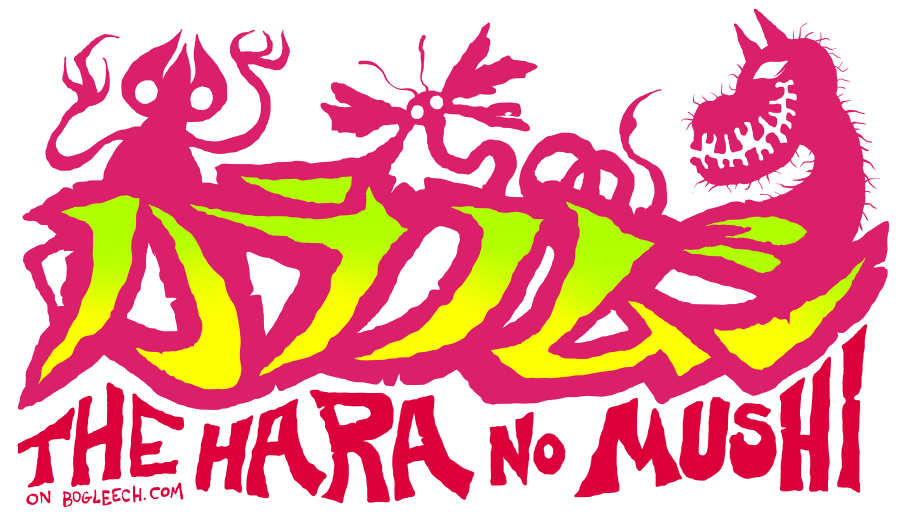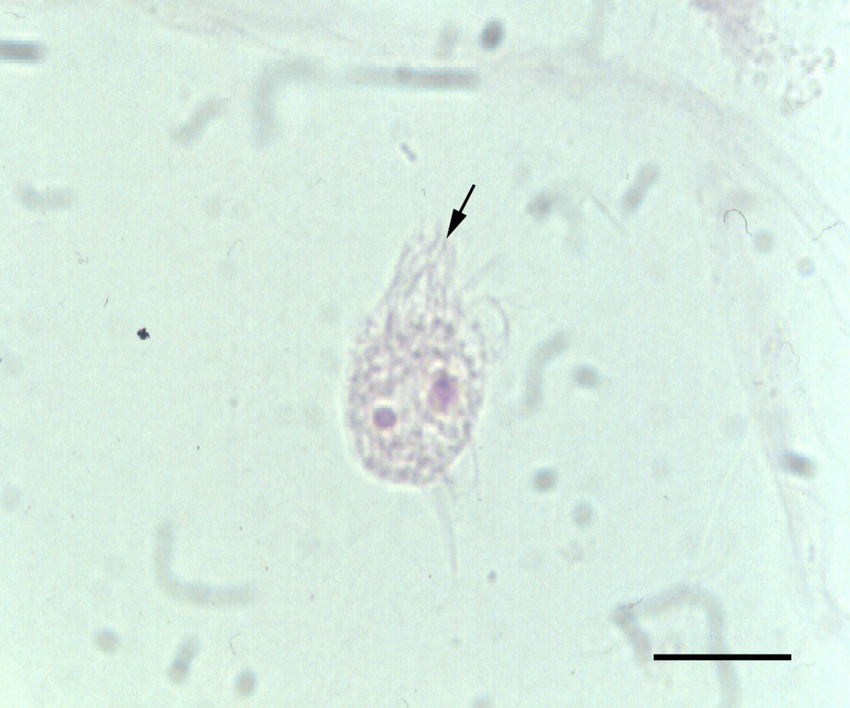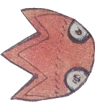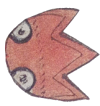
DAY NINETEEN: HAISHAKU
("Lung Mass")
Written by Jonathan Wojcik, Researched and Translated by Rev Storm
Those possessed by this mass become pale-skinned, repulsed by strong smells of all sorts, and extremely pessimistic, even gloomy and worried at all times. This is said to be because the cloud-like lung mass fills their lungs and therefore shades their heart, making them "sunny no longer," and they'll eventually start to cry uncontrolllably. This also makes it difficult to treat the mass, since the acupuncture must be done especially delicately.
Bizarrely, while sensitive to other odors, the possessed will begin to love spicy flavors, and the only smell they will find appealing is that of raw meat.
Design Review:
Both stages of this bug are cool looking. The larva looks surprisingly like some sort of water flea or even a ciliated protozoan, like a paramecium, but also kind of feels to me like a little owl or some other bird with its wings folded up. The adult has some obvious similarities to yesterday's rock monster, and the two come one after another in the book, but otherwise have nothing in common with the Haishaku being more "cloud like." I do also like its red tendrils.TODAY'S REAL WORLD "PARASITE:"
Lophomonas blattarum?

No parasites exist that make you crave raw meat or cry all the time, and surprisingly few are documented that ever inhabit the human lungs, but we do have an interesting one to talk about that offers select parallels. I mentioned that the larval stage reminds me of a ciliate, and there actually is one supposedly found in lungs that is covered in waving flagellae. We say supposedly because there is apparently some controversy as to whether this single-celled organism has really been recovered from human lungs or is easily confused with natural, ciliated lung cells that have broken loose, but some say the evidence is much more in the favor of the former.
The problem is that this is not a protozoan which evolved to inhabit lungs at all, but to live as a harmless commensal in the gut of common cockroaches. If expelled from the host insect's body, the protozoans can enter stasis as a desiccated cyst and wait for the chance to be reingested by a passing insect, but they've seemingly been found alive and well in human lungs at least a hundred times in the past twenty or thirty years. It's believed that the protozoan ends up in the lungs when breathed in along with ordinary dust, but cases are infrequent enough that this must not happen as often as you might think. How the organisms survive and what they feed upon in the lungs isn't quite clear, since in the cockroach they most likely absorb nutrients from the host's digested food, and our lungs obviously don't exhibit quite the same functions.
If these things are indeed Lophomonas, the symptoms are fortunately fairly mild. However, it has been suggested that these and perhaps other "part-time" lung inhabitants could be an overlooked factor in the development of life-long asthma, allergies and other chronic respiratory illnesses, with similar species even found in the bodies of dust mites.
NAVIGATION:





































































